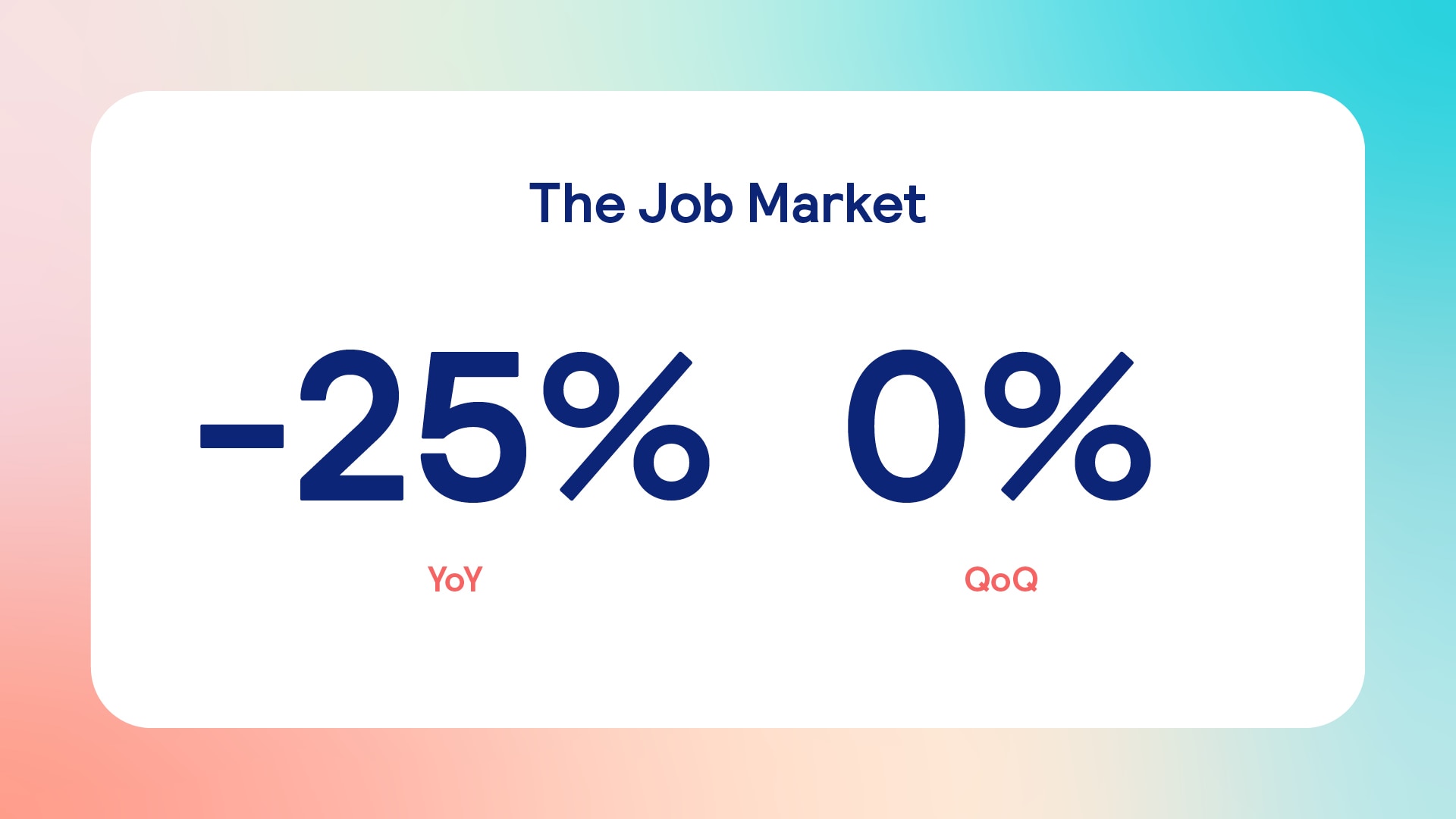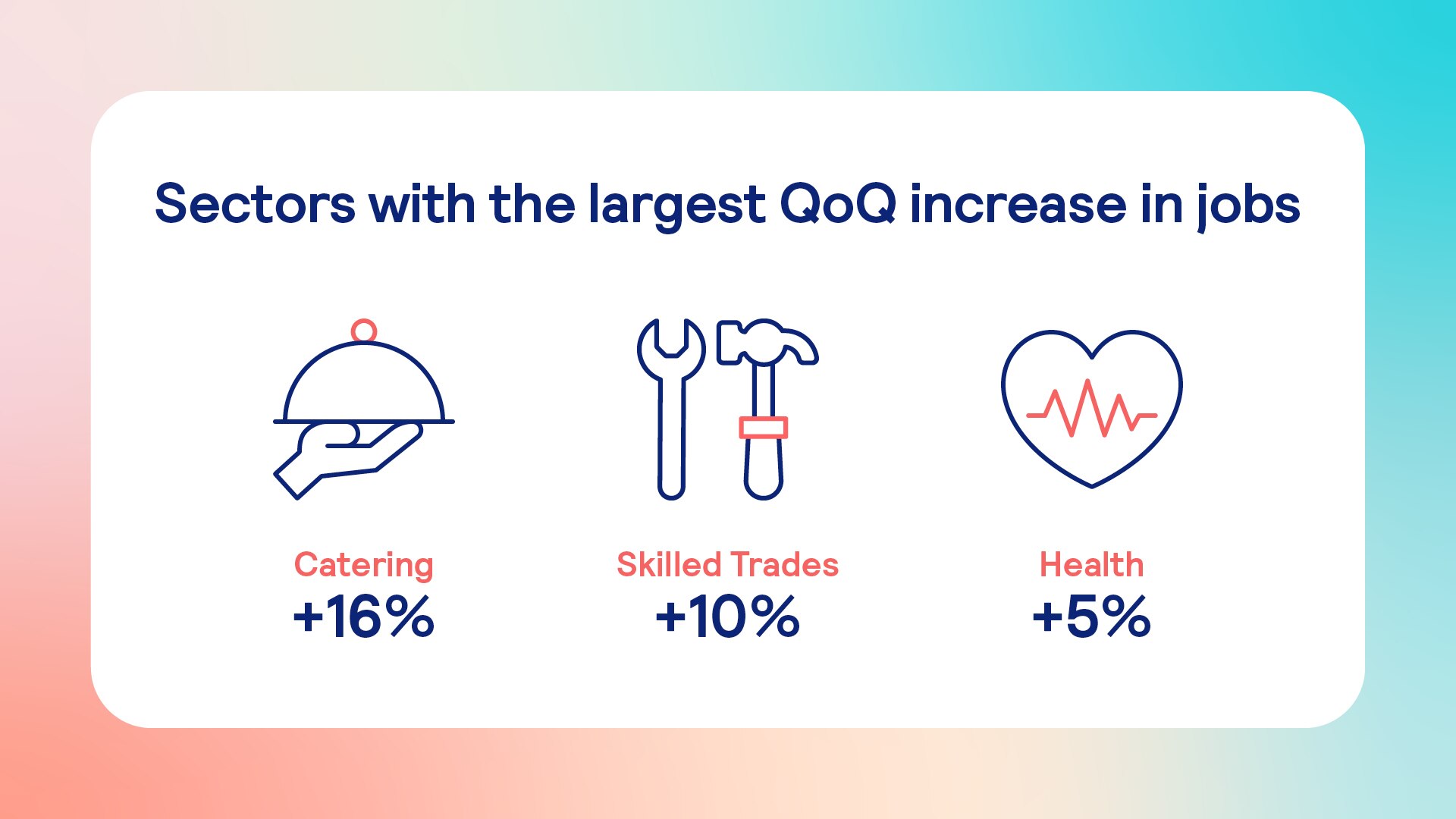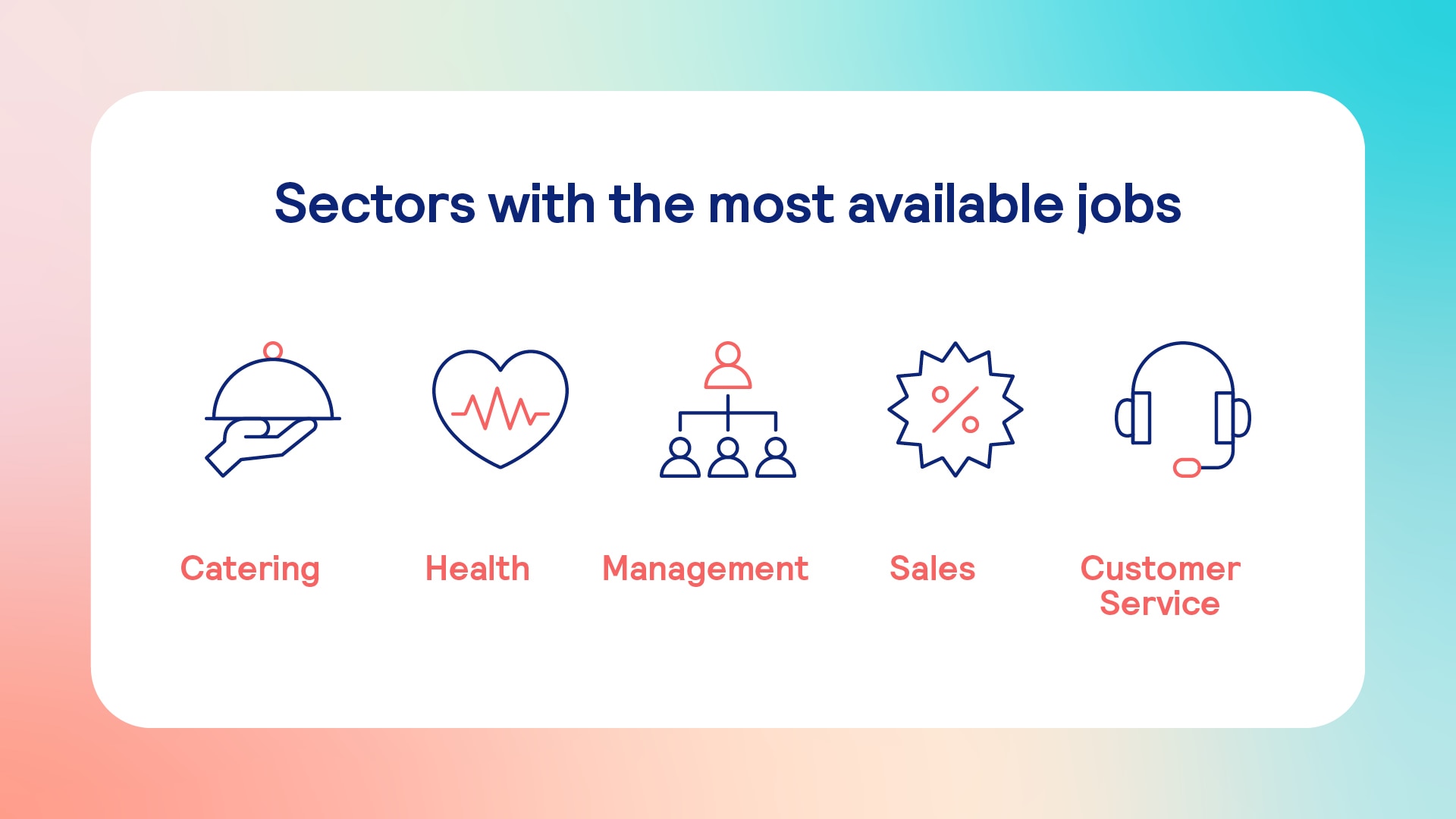The latest Jobs Index from IrishJobs for Q2 2024 reveals signs of a positive trajectory in the jobs market amid steadier rates of vacancy generation.
The data for the second quarter shows that the total number of job vacancies remain unchanged quarter-on-quarter (Q-o-Q) over the past three months, the first time that quarterly vacancies have not fallen since Q2 2022. This quarterly performance indicates positive momentum in the job market, with 19 sectors – primarily across the domestic economy – posting quarterly vacancy gains.
Jobs growth continues to moderate at an annual rate following a hiring surge in recent years, with a 25% decrease in job vacancies Year-on-Year (Y-o-Y) recorded in Q2.

Domestic versus international sectors
The 19 sectors that recorded Q-o-Q increases in vacancy rates in Q2 were primarily domestic sectors. This positive growth in vacancy generation encompassed a wide range of domestic economic activity including sectors such as Catering (16%), Skilled Trades (10%), Health (5%), Retail (7%), Property (1%), and Logistics (1%). This positive performance is likely underpinned by rising wages and the strong overall labour market, as well as an easing of inflationary pressures.
In contrast, a decrease in vacancy generation across indigenous exporters and Irish-based multinationals reveal weaker performance across internationally traded sectors. There were Q-o-Q vacancy decreases in export-led sectors such as Manufacturing (-9%) and Science (-8%). Data suggests that subdued global economic conditions continue to temper hiring activity in these internationally traded sectors.

Sectoral trends
The breakdown of vacancy data across sectors also indicates greater stability in the jobs market. 19 sectors posted Q-o-Q vacancy increases, indicating many sectors are moving towards more proactive vacancy generation.
Catering (12%) was the sector that accounted for the largest number of available vacancies over the past three months. Health (9%), Management (7%), and Customer Services (6%) made up the top four areas that provided the largest number of vacancies.

IT sector
The IT sector was also one of the largest sources of job vacancies (5.24%) in the economy in Q2. While the IT sector has undergone a period of re-balancing following a hiring surge, the latest vacancy data indicates a bottoming out of this process in Ireland, with the sector experiencing a modest -2% Q-o-Q decline in vacancies over the past three months. Data on the most frequently posted job openings by employers reveal that automation engineers were the most in-demand role in the sector over the past three months. Software engineers and security engineers were among the other roles that experienced the highest levels of demand.
Construction & skilled trades sector
While the construction sector posted a decline in Q-o-Q vacancies (-4%), it remains one of the largest sources of jobs vacancies in the economy and accounted for 4.76% of all job postings in Q2. With a surge in the level of home-building in Ireland, there remains a significant demand for skilled labour in the sector and related roles to meet housing targets. Quantity Surveyors were the most in-demand role in the sector for the second successive quarter. There was also a significant increase in demand for Construction Project Managers.
The interrelated skilled trades sector posted one of the largest quarterly increases (10%) in job vacancies, reflecting the wide breadth of skills needed to develop new housing and infrastructure projects. General Operatives, Maintenance Technicians, and Electricians were among the roles that experienced the highest levels of demand in the sector over the past three months. There was a notable rise in the number of employers seeking Carpenters.
Health sector
The Q2 Jobs Index reveals an increase in Q-o-Q vacancies (5%) in the health sector. The recent suspension of an HSE recruitment embargo is likely to further increase demand for experienced health staff over the coming months. Staff nurses were the most in-demand role in the health sector over the quarter. Clinical Nurse Managers and Speech & Language Therapists were among the most sought-after roles in the sector.

Fully remote working
In a continued trend observed over the past three quarters, fully remote/working-from-home vacancies decreased (23%) in the second quarter, substantially faster than that of overall vacancies. The proportion of working-from-home vacancies to overall vacancies has dropped significantly to 2.2%, down from its highest level of 3.3% in Q3 2023. This trend suggests a further reduction in the level of fully remote home-working in Ireland in 2024.
Commenting on the release of the Index, Sam Dooley, Country Director of The Stepstone Group Ireland with responsibility for IrishJobs, said:
“Against a backdrop of favourable conditions, including rising real income levels for Irish households and falling levels of inflation, the Irish economy continues to grow. The Central Bank of Ireland’s (CBI) latest quarterly bulletin forecasts that Modified Domestic Demand will increase by 2.1% in 2024.
“These economic conditions are also reflected in the labour market, with unemployment levels expected to remain at 4.5% for the year, according to the CBI, close to its historic low recorded last year. In this positive environment, the IrishJobs Q2 Jobs Index reveals that the jobs market is on a positive and steady trajectory following a period of significant volatility. Quarterly vacancies have not fallen for the first time in eight successive quarters, indicating the end of a cycle of heightened volatility in the jobs market. Over the coming months, we can expect to see greater stability in vacancy rates.
“The Index also analyses changes in job vacancies across different sectors of the economy. Significantly, domestic-oriented sectors are largely outperforming internationally traded sectors such as manufacturing and science. This positive performance at the national level may be driven by a rise in real income among the population. Rising wages and falling levels of inflation mean that many households can increase discretionary spending and contribute to service-led growth in the domestic economy.
“Health, skilled trades, and property were among the domestic-led sectors to post increases in quarterly vacancy rates. Given the significant competition for highly skilled talent that persists within these industries and others, it’s important that employers regularly review their talent strategies to ensure they meet the changing needs of professionals.
“Findings from our recent research on talent in Ireland and across the globe revealed that providing a good work-life balance to employees continues to be the most important job preferences for professionals in Ireland, closely followed by financial compensation and job security.”
